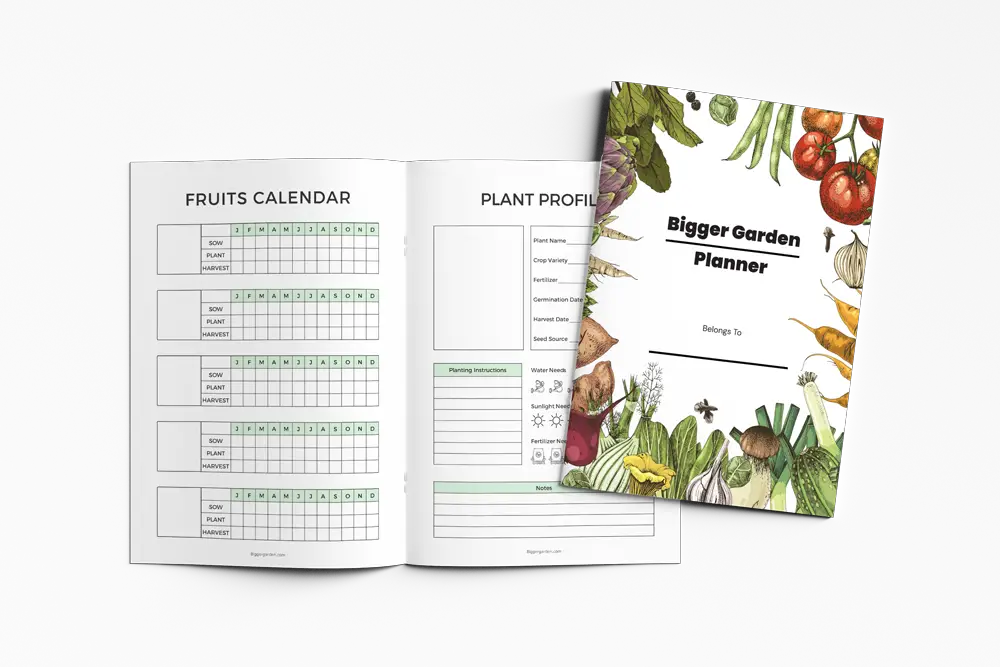How Often Should You Put Bone Meal on Tomato Plants?

This post follows our research editorial guidelines.

I add bone meal to my tomao plants every growing season. It’s the perfect low-nitrogen fertilizer that tomatoes love. Bone meal is rich in phosphorous and calcium which help make the fruit sweeter and firmer. If you’ve ever noticed black spots on the bottom of your tomato plant, this is a sign that your soil was lacking calcium. Unfortunaltley at this stage end rot has set in and it’s often too late. Adding a few scoops of bone beal could mean the difference between a full tomato harvest and a bigger compost pile.
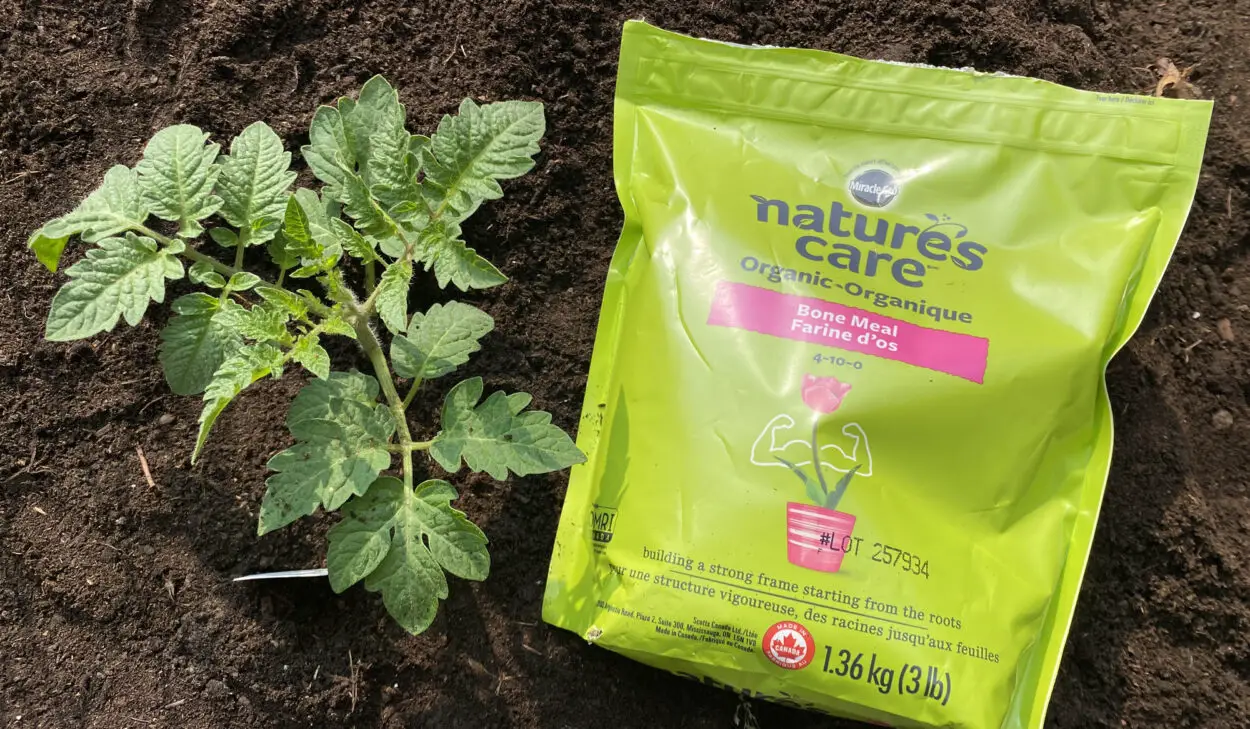
Having the right nutrients in place when starting your tomato plants will set you up for success. Bone meal is a prime example of this nutrient-rich plant food your tomatoes need.
Generally speaking, you should only need to add bone meal to your tomato plant once per season. Apply bone meal at the beginning of the growing season while your translating your tomato plants or once it’s had time to establish if grown directly from seed. Sprinkle a large teaspoon of bone meal in the ground at the base of your tomato plant so it can mix with the soil.
Table of Contents
The reason why bone meal can be used so sparingly is that it is a slow-release fertilizer. Unlike fast-release fertilizers that can give your plant too many nutrients too quickly and cause your plant to weaken, slow-release fertilizers release important nutrients over time so they’re not as at risk for damage.
Continue reading to learn more about why bone meal is one of my favorite low-nitrogen fertilizers, how to use it, and what plants (besides tomatoes) it’s best for. It’s been one of my go-to fertilizers for years now!
Nutrient Composition of Bone Meal
So what exactly is bone meal? Bone meal is derived from leftover animal bones. These bones, which are ground up and dried, contain high levels of calcium, nitrogen, potassium, and phosphorus. Generally speaking, the value of the primary macronutrients in bone meal (nitrogen, phosphorus, and potassium) is ranked in a ratio of 4-10-0.
Though nitrogen and phosphorus are in the same nitrogen group, or “family,” they do have some differences, most notably that nitrogen goes through a gaseous phase, while phosphorus does not. However, they both support plant growth, so they’re both vital components of our ecosystem’s survival. While nitrogen works to develop lush foliage, phosphorus will ensure a bounty of tasty tomatoes every time.
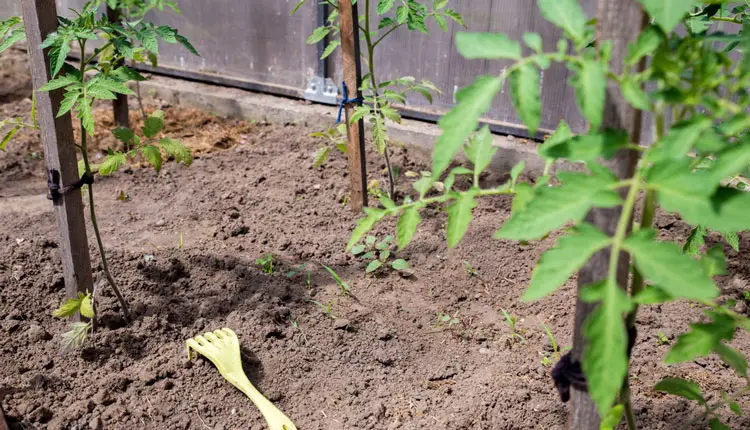
How Do You Apply Bone Meal to Tomato Plants?
The process of applying bone meal to tomato plants is relatively easy. First, you want to make sure that the pH level of your soil is just right. A pH level between 6.0 and 7.0 is best for growing tomatoes. Then, grab a large teaspoon of bone meal and then place it into a hole at the base of the tomato place and mix with the soil. This is especially great if you’re just planting tomato seeds for the first time. This will help your plants grow big and healthy. You can also add crushed eggshell for an extra boost of magnesium and calcium.
You can also sprinkle it around the base of the tomato plant if it’s already grown, and mix it into the soil using a fork or small hand rake. As mentioned earlier, one application of bone meal to your tomato plants per season should be enough, especially since the nitrogen, phosphorus, and calcium are all released into the soil at a slower rate than synthetic fertilizers.
Can You Use Too Much Bone Meal?
Yes, you can use too much bone meal. According to Ron Finley, a self-taught gardener who now teaches his own gardening MasterClass, “overfertilization of bone meal can push out other nutrients that your plant needs.” Since the dose of nutrients in bone meal is so strong, using too much of it can deprive your plant of other vital nutrients like sulfur, iron, and magnesium.
While nitrogen, phosphorus, and calcium are all essential things to help your tomatoes grow, they can’t be the only thing that is allowed to grow.
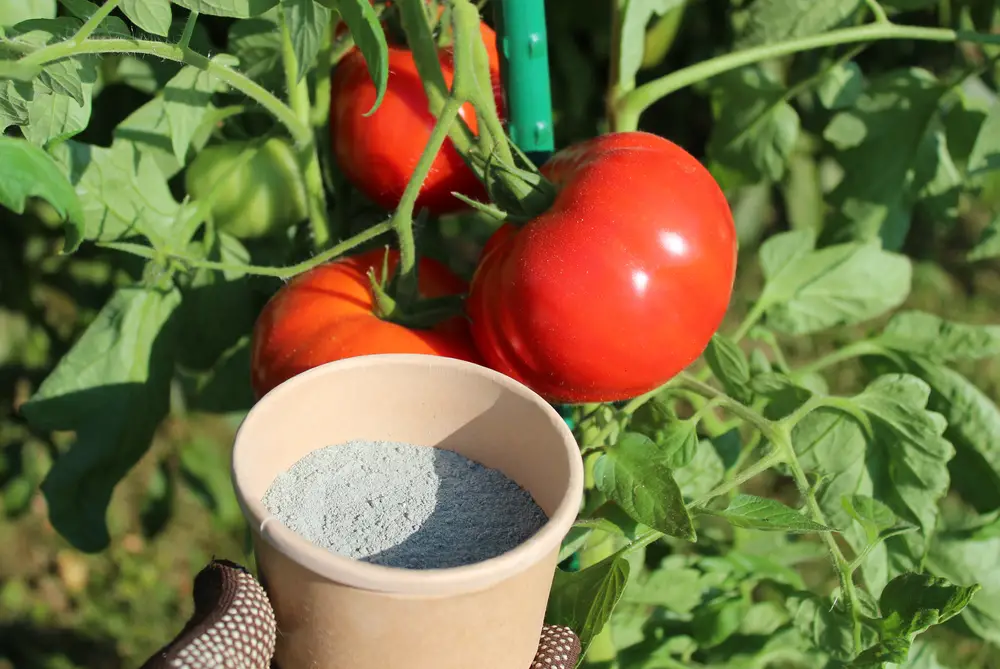
Other Sources of Calcium for Tomatoes
Calcium is an essential nutrient for successful plant growth because, without it, your plant may suffer from stunted growth and poor development. In worst cases, it may cause necrosis, which is when the plant’s tissue dies.
If you don’t have bone meal or don’t feel comfortable using it, don’t worry: there are other ways you can include calcium into your tomato plants diet.
In place of bone meal, you may also use broken eggshells, powdered lime, or wooden ashes as forms of calcium. Powdered lime is made out of ground-up limestone, which makes up all the calcium inside a stone. Though it may sound odd, about a quarter of wooden ash is made from calcium carbonate.
The best way to use powdered lime is to dig into the soil about 12 inches deep and add your ground limestone before planting your tomatoes. Use about ¾ cup of powdered lime for each tomato plant. If you plan on using wooden ashes, all you have to do is sprinkle a little bit at the base of your tomato plant. Since it’s water-soluble, it’ll sink into the soil and into the roots of your tomato plant. Just remember to dry it completely before using it, as using it wet will remove all the nutrients.
Eggshells, on the other hand, work as a slow-release fertilizer and release nutrients over time steadily. Because they’re so high in calcium, they’re often a main component in composting, which can also be used to revive dead soil and support healthy plant growth. Commonly, eggshells are thought of acting as a type of mulch, which can help fend off nasty weeds.
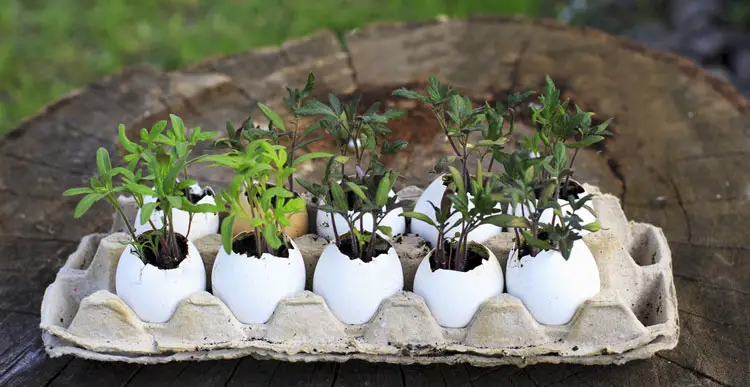
What About Using Bone Meal on Other Nightshades?
If you’re looking for healthy root development for any other nightshade vegetables like potatoes, eggplants, and peppers, then you should consider using bone meal. There are a few advantages of using bone meal on these plants, as well as in general including:
- Promoting lush growth
- Providing a strong root structure
- Yielding more fruit and seeds
- Making your plants more resistant to disease and pests
All of these factors can help you grow large, healthy nightshade vegetables that are full of nutrients.
Bone Meal For Peppers
If you purchased a bag of bone meal at a store, that’s a lot to have on hand for only tomatoes -unless you’re a tomato farmer! So, it’s a good thing that you can also use it for other tasty vegetables like peppers and potatoes (but we’ll talk about those starchy vegetables a little bit later).
Like tomatoes, peppers need the right nutrients and environment to grow, which is why using bone meal comes highly recommended.
As mentioned earlier, bone meal contains a high dose of phosphorus, which is used to help pepper plants develop healthy batches of flowers. The more flowers your pepper plant has, the more peppers you’ll have, especially once these flowers get pollinated.
Like the phosphorus which helps support flower growth, the calcium from the bone meal helps promote healthy leaf growth while simultaneously keeping harmful diseases away like Phytophthora stem rot.
To use bone meal for pepper growth, add your bone meal to the soil, cover it and then place your seeds over top. Bone meal has a bit of a “dead animal smell,” which will also keep away any bugs and pests from your plant. Furthermore, it’ll also keep away other rodents like rats and skunks, as even dogs who may look at your peppers as a free snack.

Bone Meal for Potatoes
Bone meal also works great with growing potato plants since the high levels of phosphorus promote root and flower growth. This is very easy to apply to potatoes. Simply just sprinkle some onto the topsoil and allow rain to release the nutrients into the soil. This allows the nutrients to slowly release, letting your potato plant soak up the nutrients in a gradual manner over time.
Unlike tomato plants, you may need to continually add bone meal to your soil depending on your soil’s test results. Soil tests will measure the amount of macronutrients the soil has. So, if it’s low on vital nutrients such as calcium, potassium, or nitrogen, more bone meal may need to be added to support proper plant growth over the 90-day growth period.
Final Thoughts
If you’re new to gardening, you may not have ever heard of bone meal before, let alone its numerous benefits. Or, if you haven’t yet tried your hand at planting root vegetables before, you may have been aware of what the big difference between a fast and slow-release fertilizer like bone meal is or why it mattered.
Available at most gardening centers, bone meal is an easy way to add nutrients to your soil and promote healthy vegetable plant growth. Bone meal generally works best on root crops such as carrots, beets, parsnips, jicama, rutabagas (and of course all the vegetables we mentioned here).
But, if you have any leftovers, you can also use them on your grass, plants, and flowers. Simply put, there’s no shortage of things you can use bone meal for. With these tips, you can start growing your very own backyard garden in no time and keep it going for a long, long time.
